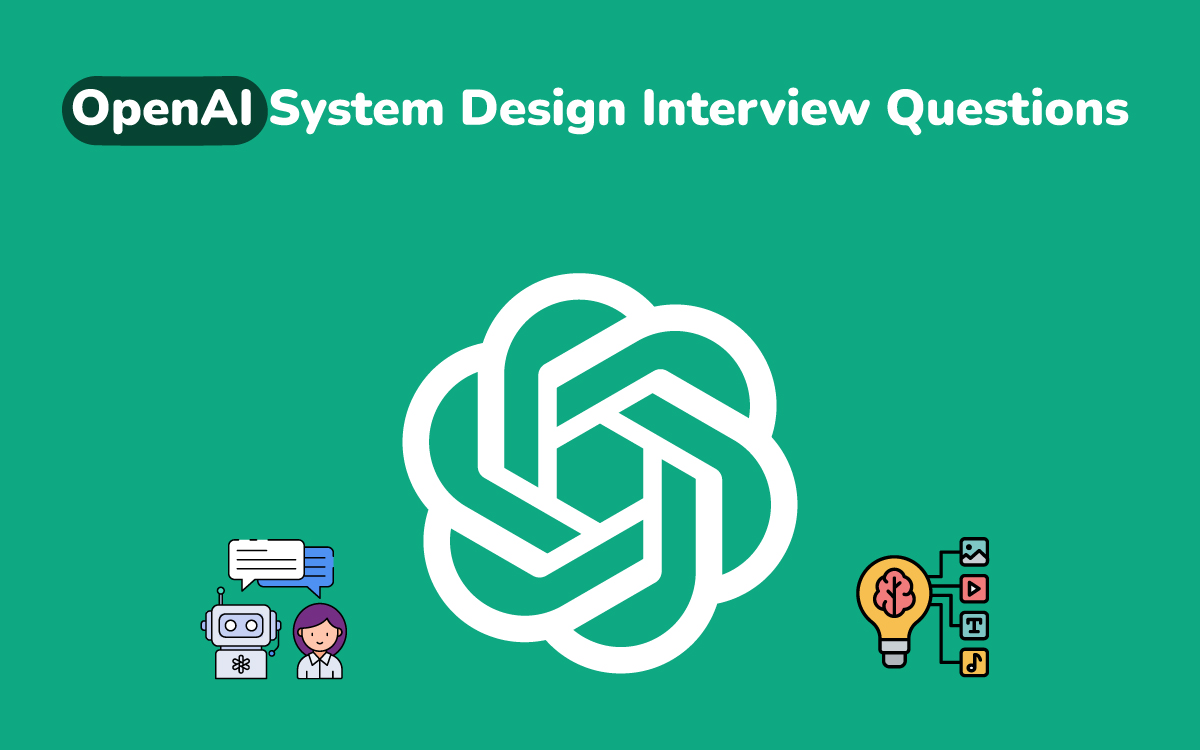OpenAI SDE interviews often transcend standard algorithmic problems, delving into complex, real-world scenarios that assess both coding proficiency and system design acumen. Drawing from a curated collection of authentic interview questions, this guide unpacks eight advanced challenges, providing insights into their solutions, associated concepts, and recommended resources to bolster your preparation.
1. 🧭 Implementing a Unix-like cd Command
Challenge:
Simulate the behavior of the Unix cd command, handling relative paths (. and ..), absolute paths, and symbolic links (soft links) with potential cycles.
Key Concepts:
- Path Resolution: Utilizing stacks to manage directory traversal.
- Symbolic Links: Handling mappings and detecting cycles using Depth-First Search (DFS).
- Edge Cases: Managing redundant slashes and invalid paths.
Recommended Practice:
While this is a custom problem, practicing path normalization and file system simulations can be beneficial.
Further Reading:
2. 🔁 Designing a Resumable Iterator
Challenge:
Create an iterator that can pause and resume its state, extending to handle multiple files and asynchronous operations.
Key Concepts:
- State Management: Implementing
get_stateandset_statemethods. - Composite Iterators: Managing multiple iterators concurrently.
- Asynchronous Programming: Utilizing coroutines for async iteration.
Recommended Practice:
3. 🕒 Time-Based Key-Value Store
Challenge:
Design a data structure that stores key-value pairs with timestamps and retrieves the value based on a given timestamp.
Key Concepts:
- Binary Search: Efficient retrieval of the latest timestamp not exceeding the given time.
- Data Storage: Mapping keys to a list of (timestamp, value) pairs.
Recommended Practice:
Further Reading:
4. 🗃️ Building an In-Memory Database
Challenge:
Implement a simple in-memory database supporting basic SQL-like operations: insert, query with WHERE clauses, and ORDER BY.
Key Concepts:
- Data Modeling: Structuring data for efficient storage and retrieval.
- Query Parsing: Interpreting and executing simple query conditions.
- Indexing: Creating inverted indexes for faster search operations.
Recommended Practice:
5. 📊 Crafting a Spreadsheet API
Challenge:
Design a spreadsheet where each cell can contain a value or a formula referencing other cells, handling updates and cyclic dependencies.
Key Concepts:
- Dependency Graphs: Tracking cell dependencies to update values accordingly.
- Cycle Detection: Preventing infinite loops due to circular references.
- Memoization: Caching computed values for efficiency.
Recommended Practice:
6. 🏆 Implementing a Priority-Based Key Counter
Challenge:
Maintain a data structure that counts the frequency of keys and retrieves the key with the highest count efficiently.
Key Concepts:
- Hash Maps: Tracking the count of each key.
- Heaps: Maintaining a max-heap to retrieve the highest frequency key.
Recommended Practice:
7. 🌐 Developing a Multithreaded Web Crawler
Challenge:
Create a web crawler that starts from a given URL and crawls all reachable URLs under the same domain, utilizing multithreading for efficiency.
Key Concepts:
- Breadth-First Search (BFS): Traversing web pages level by level.
- Concurrency: Managing multiple threads to fetch URLs simultaneously.
- Thread Safety: Ensuring shared resources are accessed safely.
Recommended Practice:
8. 🛠️ Debugging Distributed Systems
Challenge:
Diagnose and resolve issues in large-scale distributed systems, such as latency spikes, data inconsistencies, and service outages.
Key Concepts:
- Monitoring: Implementing logs, metrics, and tracing for observability.
- Fault Tolerance: Designing systems to handle partial failures gracefully.
- Consistency Models: Understanding eventual consistency and its implications.
Recommended Reading:
📚 Essential Knowledge Areas
To excel in tackling the above challenges, a solid grasp of the following areas is crucial:
- Data Structures & Algorithms: Arrays, linked lists, trees, graphs, heaps, hash maps, and algorithmic paradigms like DFS, BFS, and dynamic programming.
- Concurrency & Multithreading: Understanding threads, synchronization, deadlocks, and concurrent data structures.
- System Design: Principles of scalable and maintainable system architecture, including microservices, load balancing, and database sharding.
- Databases: Proficiency in SQL and NoSQL databases, indexing, transactions, and normalization.
- Software Engineering Best Practices: Writing clean, testable code, version control with Git, and continuous integration/deployment (CI/CD) pipelines.
🎯 Recommended Resources
- Books:
- Cracking the Coding Interview by Gayle Laakmann McDowell
- Designing Data-Intensive Applications by Martin Kleppmann
- Clean Code by Robert C. Martin
- Online Platforms:
- Courses:
📝 Final Thoughts
Mastering these advanced interview questions requires a blend of algorithmic prowess and system design insight. Regular practice, coupled with a deep understanding of underlying concepts, will equip you to navigate the complexities of technical interviews confidently. Embrace the challenges, and let each problem sharpen your skills further.

